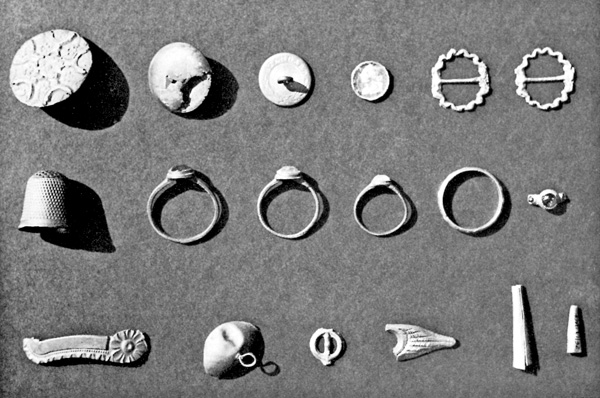|
|
 |
Canadian Historic Sites: Occasional Papers in Archaeology and History No. 1
Archaeological Investigations of the National Historic Sites Service, 1962-1966
by John H. Rick
Excavations in Saskatchewan
Sturgeon Fort
The only contract awarded during the 1962 season went
to the Saskatchewan Museum of Natural History to excavate Sturgeon Fort,
some three miles west of Prince Albert, Saskatchewan. This site, the
first fur trading post on the North Saskatchewan River, was occupied
from 1776 to 1780 by a group of independent traders who had organized
themselves into a pool. Norman F. Barka was employed by the Museum to
direct the excavation project. The fort had been subjected to heavy
erosion by the river and the 1962 excavations were intended to salvage
such information as was still obtainable, It was found that, unfortunately,
much of the site had already been washed away so that comparatively
little in the way of structural data was obtained. However, the work
yielded a small, but closely dated, collection of the manufactured
items brought into the wilderness by the traders (Barka 1966a).
Among the artifacts recovered by Barka were over
2,000 trade beads comprising 80 different varieties. This collection was
further augmented during the summer of 1966 by Terrence W. Foster's
excavation of a cache pit which erosion had uncovered in the river bank
(Foster 1966).

15 Some trade goods were recovered from the 1962
excavations at Sturgeon Fort, an 18th-century trading post in
Saskatchewan. Erosion had destroyed much of the site so that the
architectural details recovered were relatively few, but the artifacts
(including a large collection of trade beads) depict the range of items
brought into the wilderness for use and for trade.
(Roger T. Grange, Jr.)
|
|

